27 Verbs in Movement
| Level | Materials |
| A1 and A2 | —- |
I got this idea from a workshop conducted by Iole Vitti and Eva Jonai in Poços de Caldas, Minas Gerais, Brazil, in 1997. They used movements to teach the basic forms of the verbs . For example, students will say “see” (touching their heads); “saw” (touching their waists); and “seen” (touching their knees). I have since developed other movements to include sentences, negatives, interrogatives, and third person singular of the simple present. Brazilian students – and I suppose those from other language backgrounds – have a very difficult time with inversions and the present perfect. This activity has allowed me to practice the forms and has truly helped my students automatize them.
Start with the basic form of the verbs, touching the equivalent part of the body. You say the verb (“see”), and students say all the forms while touching their body (“see”, “sees”, “saw”, “seen”). You may, after they have practiced, place them in groups and have students take turns being the teacher.
- The head (simple present): “see”, “take”, “love”, etc.
- The shoulder (simple present – third person singular): “sees”, “takes”, “loves”, etc.
- The waist (simple past): “saw”, “took”, “loved”, etc
- The knees (present perfect): “seen”, “taken”, “loved”, etc.
Start including sentences. First model some sentences by saying the sentence and touching corresponding part of the body. Example:
- I see movies. (I model by touching my head as I say the sentence.)
- I saw movies. (I model by touching my waist as I say the sentence.)
- I’ve seen movies. (I model by touching my knees as I say the sentence.)
Some examples:
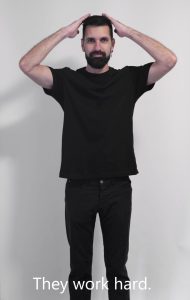
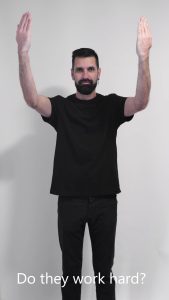
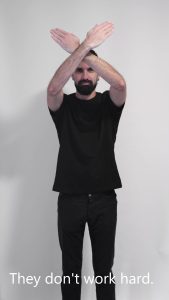
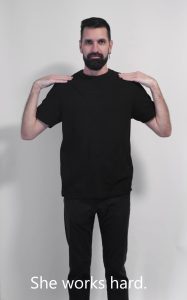


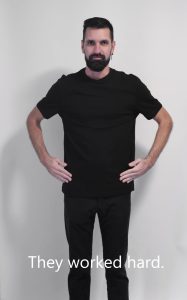
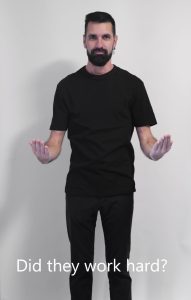


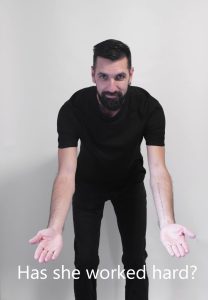
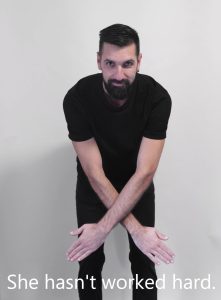
Continue providing an initial sentence in the simple present (e.g., I walk to school) and ask students to do the movements while they change the sentence using the different forms (e.g., students do the movement and chant together “I walk to school.”, “I walked to school.”, “I’ve walked to school.”).
Address the third person singular separately. For example, for the sentences
- He buys a sandwich. (Touch the shoulder as you say the sentence.)
- He bought a sandwich. (Touch the waist as you say the sentence.)
- He’s bought a sandwich. (Touch the knees as you say the sentence.)
As students become more proficient, include the inversions. For the interrogative form, have them extend their arms in front of their heads (simple present), their shoulders (simple present, third person singular), their waists (simple past), and their knees (present perfect). For negative forms, they cross their arms in front of their heads, shoulders, waists, and knees.
Note: Do not introduce all movements at the same time. You may choose to start by practicing only the affirmative, interrogative, and negative forms of the simple present. Or, only the interrogative form in the present, simple past, and present perfect. For example: Do you take a shower? Did you take a shower? Have you taken a shower?
- Touch your head: I see movies
- Extend arms in front of your head: Do you see movies?
- Cross you arms in front of your head: I don’t see movies.
- Extend arms in front of your shoulder: Does he see movies?
- Cross you arms in front of your shoulders: He doesn’t see movies.
- Extend arms in front of your waist: Did you see movies?
- Cross you arms in front of your waist: I didn’t see movies.
- Extend arms in front of your knees: Have you seen movies?
- Cross you arms in front of your knees: I haven’t seen movies.
Note: You may choose to practice just one set of movements. For example, you may choose to practice only the third person singular. You say the sentence and do the appropriate movement, always demonstrating first what you will ask for.
Examples:
Teacher: Today I want to practice this:
- John watches TV (touch your shoulders).
- Does John watch TV? (extend your arms in front of your shoulders).
- No, he doesn’t watch TV (cross your arms in front of your shoulders).
Teacher: Today I want to practice this:
- I play tennis (touch your head).
- I don’t play tennis (cross your arms in front of your head).
- I didn’t play tennis (cross your arms in front of your waist).
- I haven’t played tennis (cross your arms in front of your knees).
Then, go on producing other similar sentences with the verbs you have practiced. You may choose any combination of movements.
Note: I use the verbs that appear in a story, or a poem, or a paragraph they have produced. I also write them on flipchart paper (using specific colors for each form: blue for the present, red for the past, and green for the past participle) and affix them on the wall around the classroom to activate their peripheral memory.
I also use the movements to help students correct themselves when speaking. For example, a student says “I go to a restaurant yesterday.” I just touch my waist and the student corrects him/herself.


Feedback/Errata